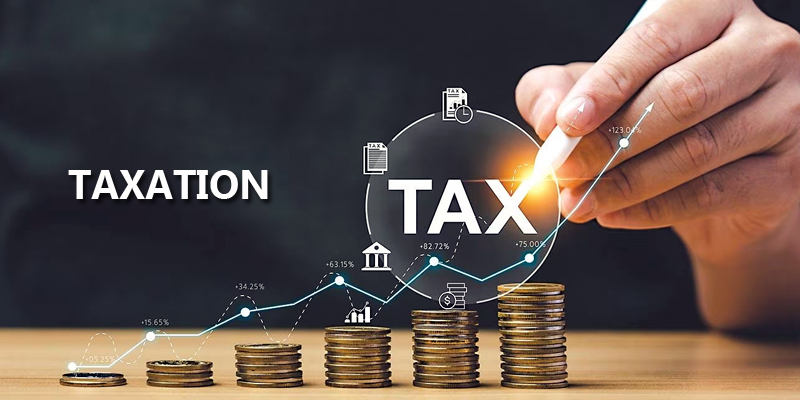When it comes to growing capital wisely, investors often find themselves torn between choosing a PMS or an AIF. While both sound competitive and promising, the one that genuinely delivers post-tax returns is the one that investors prefer. Let’s explore which investment options best suit your financial situation and how they differ from one another.
Understanding PMS (Portfolio Management Services) and AIF (Alternative Investment Funds)
PMS (Portfolio Management Services) is a financial service where a portfolio manager manages your investment portfolio of equities. In this scenario, you own the individual securities through your demat account, and the manager acts as a discretionary, non-discretionary, or advisory individual, depending on the arrangement. While PMS offers flexibility, transparency, customization, and direct ownership, on the downside, it requires higher minimums, more active involvement, reduced risk pooling, and higher fees compared to funds.
AIFs, on the other hand, are pooled investment services that raise funds from reputable investors and invest in strategies or non-traditional assets, such as hedge strategies and realistic unlisted equity arbitrage. These investments are managed by the Securities and Exchange Board of India SEBI under the SEBI Regulations Act, 2012.
AIFs are categorized into three broad classes: Category I (startups, infrastructure, and social ventures), Category II (debt funds, real estate, and private equity), and Category III (long-short strategies, hedge funds, and other similar investments).
Regarding AIFs, capital is pooled, so the investor can hold interests or units rather than individual stocks, thereby constraining liquidity, enlarging minimum investment tickets, and implementing a less transparent strategy at the individual stock level.
Key differences between PMS and AIF
Listing out a breakdown of the significant differences between PMS and AIFs.
| Features | PMS | AIFs |
| Structure and ownership | Hold securities in your name | Hold units in a pooled fund. |
| Customization | Portfolios are meant for you, your risk profiles, and your goals | Follow a predefined strategy as per the funds’ mandate. |
| Minimum investment | ~₹50 lakhs | ~₹1 crore or higher. Funds are restricted to an HNI or an organization. |
| Liquidity and lock-in | Offer better liquidity | Many AIFs, especially those in categories I and II, are closed-ended with redemption restrictions and a longer locking period. In contrast, category III AIFs are structured as either open-ended or closed-ended and offer better liquidity, if they are open-ended. |
| Investment strategy and asset class | Focus on listed equity and direct holding | Focus on unlisted, alternative assets, private markets, and hedge strategies, among other investment options. |
| Transparency and control | Offer complete control of your holdings | Less transparent, as you can only see the nav and strategy |
| Return and turnover | Higher fees compared to mutual funds due to higher turnover. | Higher fees compared to mutual funds, while some may carry additional fees along with management fees. |
| Regulation and reporting | Regulated by SEBI, investor experience and governance system differ. | Regulated by SEBI, investor experience and governance system differ. |
Taxation structure PMS vs AIF
Taxation is one of the vital differentiators considered when comparing PMS and AIFs, which offer better post-tax returns.
As PMS holds security in your name, the tax treatment is equivalent to direct investing. This is because you personally own the securities, which provides better flexibility in tax planning.
But in the case of AIF, taxation depends on the categories. Category I and II AIFs enjoyed pass-through status, where the income is taxed directly to the investors, not the fund.
In the case of category III AIFs, they do not have pass-through status, which means the fund is taxed at the fund level itself, and investors get tax-adjusted returns. This means that if you invest in this category, you will lose flexibility in terms of timing as the fund pays taxes before sharing profits.
PMS vs AIF: Which is better for you
Here are some key points to consider when deciding whether a PMS or AIF is the best fit for you.
- Investor size and eligibility: If you require a tailored management approach or wish to invest more than ₹50 lakh, a PMS is preferable. If you can invest more than ₹1 crore and want a commitment for a more extended lock-in period, an AIF can offer tailored strategies.
Control and limpidity: if you want to hold investments, maintain individual tax control, and customize your portfolio, PMS takes the lead. Otherwise, AIF works if you prefer to relinquish transparency to use alternative strategies.
Risk appetite and horizon: If you require liquidity or a shorter-term period, a PMS is the better option; otherwise, an AIF is more suitable if you’re willing to accept a longer horizon, tolerate a locking period in some cases, and seek alternative assets or higher returns.
Tax situation: If you experience frequent turnover or face high taxes, you must choose a structure that offers maximum tax efficiency. A PMS and category I/II AIF offer better tax treatment. However, if you cannot handle taxes yourself, select category III AIF, and your returns will be taxed at the fund level, resulting in tax-adjusted returns.
Strategy fit: if you want a customized debt Portfolio or listed equity, PMS is preferable. Otherwise, use AIF to get exposure to private equity hedge strategies and credit.
Fees and costs: While PMS fees are straightforward and offer higher turnover taxes, adding extra costs, AIFs, on the other hand, charge performance fees in addition to fixed management fees, which together reduce the net value.
Conclusion
Both financial investments have their own strengths and weaknesses. While PMS offers transparency, accountability, and flexibility, AIF brings more strategic input and diversification. The ideal choice ultimately depends on the risk factor’s investment limit and tax preferences. Therefore, understanding the post-tax impact is essential to make your capital work more wisely, rather than complicating it.


